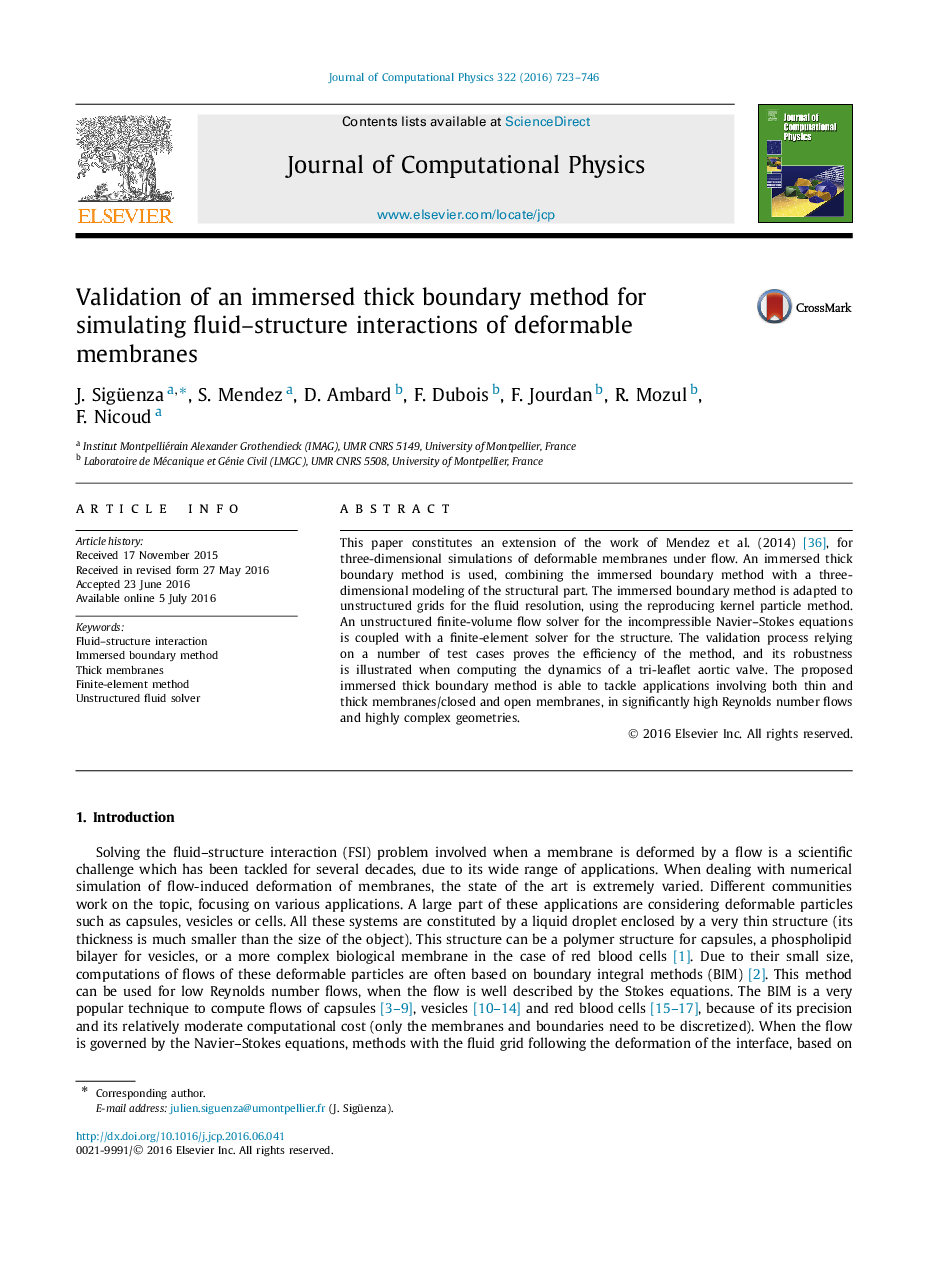| Article ID | Journal | Published Year | Pages | File Type |
|---|---|---|---|---|
| 6929637 | Journal of Computational Physics | 2016 | 24 Pages |
Abstract
This paper constitutes an extension of the work of Mendez et al. (2014) [36], for three-dimensional simulations of deformable membranes under flow. An immersed thick boundary method is used, combining the immersed boundary method with a three-dimensional modeling of the structural part. The immersed boundary method is adapted to unstructured grids for the fluid resolution, using the reproducing kernel particle method. An unstructured finite-volume flow solver for the incompressible Navier-Stokes equations is coupled with a finite-element solver for the structure. The validation process relying on a number of test cases proves the efficiency of the method, and its robustness is illustrated when computing the dynamics of a tri-leaflet aortic valve. The proposed immersed thick boundary method is able to tackle applications involving both thin and thick membranes/closed and open membranes, in significantly high Reynolds number flows and highly complex geometries.
Related Topics
Physical Sciences and Engineering
Computer Science
Computer Science Applications
Authors
J. Sigüenza, S. Mendez, D. Ambard, F. Dubois, F. Jourdan, R. Mozul, F. Nicoud,
